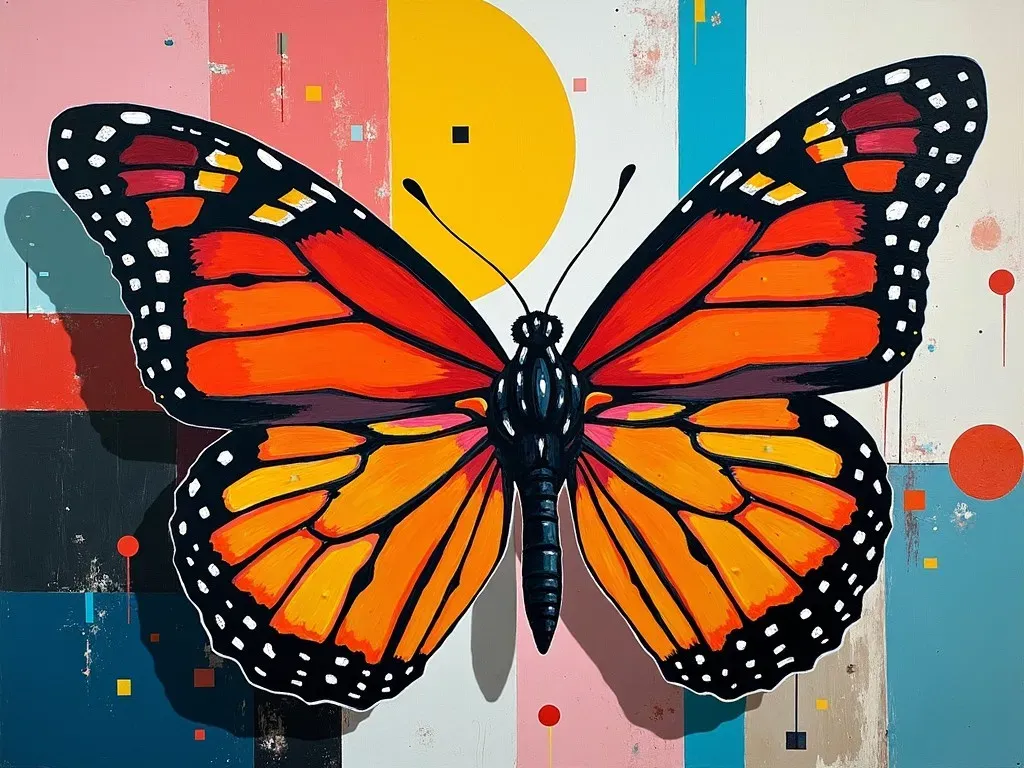Damien Hirst, born on June 7, 1965, is an English artist and art collector renowned for his provocative approach to art that intertwines beauty, death, and the complexities of modern existence. As one of the Young British Artists (YBAs) who reshaped the art landscape in the 1990s, Hirst’s work continues to revolutionize artistic expression, particularly his paintings which challenge conventional perceptions of beauty.
The Artistic Journey of Damien Hirst
Hirst’s venture into the art world began in his youth and flourished during his years at Goldsmiths College in London. He quickly became a prominent figure in the Young British Artists movement, known for his audacious and often controversial creations. Among his diverse body of work, Hirst paintings stand out due to their innovative Techniques and thematic depth.
Signature Styles of Hirst Paintings
-
Spot Paintings: Perhaps the most iconic series in Hirst’s oeuvre, the Spot paintings are characterized by orderly arrangements of multicolored dots on pristine white canvases. The outlook of these works is deceptively simple yet profoundly complex. The paintings evoke various psychological responses, from calmness to an unsettling awareness of their industrial production.
-
Spin Paintings: Using a spin machine, Hirst creates these vibrant works that blur the lines between control and chaos. Spin paintings derive their energy from their dynamic creation process, merging art with a sense of playful spontaneity.
-
Butterfly Paintings: Hirst employs real butterflies encased in paint, commenting on themes of life, death, and beauty. These works resonate with viewers by juxtaposing the ephemeral nature of the butterflies and the permanence of the painted medium.
Table 1: Overview of Hirst Painting Styles
| Style | Description | Themes |
|---|---|---|
| Spot Paintings | Multicolored dots on white canvas | Order, control, beauty |
| Spin Paintings | Created using a rotating canvas | Chaos, spontaneity |
| Butterfly Paintings | Incorporating real butterflies | Life, death, ephemerality |
Influences and Motivations
Hirst’s artistic vision is shaped by various influences, from the aesthetics of modern medicine to the philosophical musings on mortality. Notably, his exploration of the intricacies of life and the inevitability of death is depicted throughout his work. Hirst’s pieces often provoke intense emotional responses, making viewers reflect on their mortality and the nature of existence.
The Controversies Surrounding Hirst’s Art
Throughout his career, Hirst has not shied away from controversy. His use of preserved animals in formaldehyde and his onslaught of high-priced artwork have sparked debates regarding the definition of art, its value, and the ethical implications of using living creatures in artistic expression.
Fact 1: 2021 Auction Sale
- One of Hirst’s Spot paintings sold at auction for over £12 million, a record for a living artist.
Fact 2: Collection Sizes
- Hirst’s work comprises numerous series, with over 150 Spot paintings alone, highlighting his prolific output and commercial success.
Economic Impact of Hirst’s Work
Notable Auction Sales
| Painting Name | Auction House | Sale Price | Year |
|---|---|---|---|
| Spot Painting | Sotheby’s | £12.1 million | 2021 |
| The Physical Impossibility of Death in the Mind of Someone Living | Sotheby’s | £8 million | 2004 |
Hirst’s paintings have consistently performed strongly in the auction market, making him one of the richest living artists, with an estimated net worth of $384 million as of 2020.
Reference Video
Hirst’s Place in Contemporary Art
Damien Hirst’s impact on the contemporary art world cannot be overstated. His ability to manipulate visual aesthetics alongside profound conceptual underpinnings has redefined modern artistic practices. He challenges the viewer’s aesthetic sensibilities by creating works that are at once beautiful and disturbing, serene and chaotic. Hirst’s work not only exists within the confines of a gallery space but also permeates popular culture, often transcending the traditional boundaries of art.
Public Perception and Criticism
The reaction to Hirst’s work has always been mixed, ranging from admiration to disdain. Critics argue that his commercialization of art diminishes its value and significance. However, supporters celebrate his ability to provoke thought and discussion about important themes through a unique artistic lens.
FAQ about Hirst Paintings
Q: What are Hirst’s most famous paintings?
A: Some of Hirst’s most renowned paintings include the Spot Paintings, Spin Paintings, and his Butterfly series.
Q: How does Damien Hirst create his Spot Paintings?
A: Spot Paintings are created through a technique involving industrial production, where evenly spaced dots of various colors are applied to a canvas, often using a machine.
Q: What themes recur in Hirst’s art?
A: Recurring themes include mortality, beauty, the ephemeral nature of life, and the intersection of art and science.
Q: Where can I view Damien Hirst’s artwork?
A: Damien Hirst’s artwork can often be viewed in galleries around the world, and significant exhibitions can be found listed on reputable art sites such as Christie’s and Artnet.
Q: Are Hirst’s Spot Paintings considered art?
A: Yes, despite the ongoing debates surrounding their artistic value, Hirst’s Spot Paintings are regarded as significant contributions to contemporary art.
Conclusion
The paintings of Damien Hirst showcase a profound exploration of life, death, and beauty, making him a pivotal figure in contemporary artistic discourse. His innovative approaches and controversial themes have established Hirst as a leader in the evolving art world, capturing the attention of audiences around the globe. As the landscape of modern art continues to evolve, Hirst’s works likely will remain central to discussions about the purpose and interpretation of art in society.
